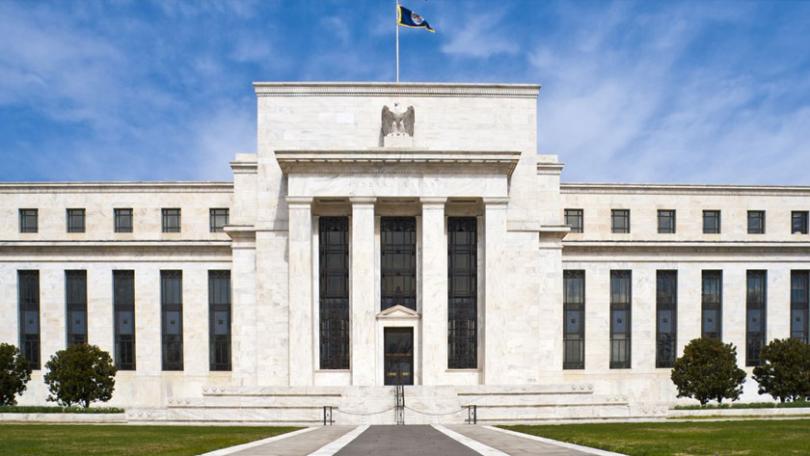The Federal Reserve took note of a resilient U.S. economy Wednesday by raising its benchmark interest rate for the second time this year and signaling that it may step up its pace of rate increases.
The Fed now foresees four rate hikes this year, up from the three it had previously forecast. The action means consumers and businesses will face higher loan rates over time.
The central bank raised its key short-term rate by a modest quarter-point to a still-low range of 1.75 percent to 2 percent. With the economy now nine years into an expansion, the move reflects the steadiness of growth, the job market’s strength and inflation that’s finally nearing the Fed’s target level.
Economists said the Fed left little doubt that it’s prepared to increase the pace of its credit tightening.
“The labor market is getting tighter, and price pressures are picking up,” said Greg McBride, chief financial analyst at Bankrate.com. “The Fed is prepared to be quicker about pushing rates higher.”
It was the Fed’s seventh rate increase since it began tightening credit in 2015, and it followed an increase in March this year.
The announcement helped resolved a debate in financial markets over whether the Fed under Jerome Powell, who succeeded Janet Yellen as chairman in February, might see a need to signal a possible acceleration in rate hikes. The statement the Fed issued Wednesday after its latest policy meeting ended suggested that he does.
Besides raising its projection for rate increases this year from three to four, the Fed removed a key sentence from the previous statement that had been viewed as foreseeing a need to keep rates low for an extended period. The Fed had previously said its key rate “is likely to remain, for some time, below levels that are expected to prevail in the longer run.”
The Fed’s new projection for the pace of rate hikes shows four rate this year and three in 2019 — both unchanged from its previous forecast in March — and one in 2020, down from the two that had been projected previously.
The new median forecast projects the benchmark rate at 3.1 percent by the end of 2019, up from 2.9 percent in the previous forecast. For 2020, the Fed foresees a median rate of 3.4 percent. That means that by then, it thinks its key rate will finally exceed the 2.9 percent it sees as neutral — as neither stimulating nor restraining growth. Should the Fed’s expectations prove accurate, its policy would then be intended to slow the economy.
In its updated forecasts, the Fed envisions stronger growth this year — 2.8 percent, up from the 2.7 percent it predicted in March. Unemployment, now at an 18-year low of 3.8 percent, would drop to 3.6 percent by year’s end and to 3.5 percent in 2019 and 2020 — levels not seen in 49 years. Inflation by the Fed’s preferred gauge would hit its target of 2 percent this year and edge up to 2.1 percent over the next two years.
A gradual rise in inflation is coinciding with newfound economic strength. After years in which the economy expanded at roughly a tepid 2 percent annually, growth could top 3 percent this year. Consumer and business spending is powering the economy, in part a result of the tax cut President Donald Trump pushed through Congress late last year.
With employers hiring at a solid pace month after month, unemployment has reached 3.8 percent. Not since 1969 has the jobless rate been lower.
Beginning in 2008 in the midst of the financial crisis, the Fed kept its key rate unchanged at a record low near zero for seven years. It then raised rates once in 2015, once in 2016, three times in 2017 and now twice this year.
The Fed aims to achieve its mandates of maximizing employment and stabilizing prices by lowering rates to spur growth during times of economic weakness and raising rates to slow growth if the economy threatens to overheat. When the Fed tightens credit, it aims to do so without derailing the economy. But if it miscalculates and overdoes the credit tightening, it can trigger a recession.
At nine years, the economic expansion is now the second-longest in history. It will become the longest if it lasts past June 2019, at which point it would surpass the expansion that lasted from March 1991 to March 2001.
While many economists think the current expansion will exceed the 1990’s streak, some worry about what might occur once the impact of the tax cuts begin to fade and the Fed’s gradual rate hikes begin to curb growth.
The Fed’s pace of rate hikes for the rest of the year could end up reflecting a tug of war between a sturdy economy and the risks to growth, including from a potential trade war that could break out between the United States and such key trading partners as China, the European Union, Canada and Mexico. All those countries have vowed to retaliate against any U.S. tariffs with their own penalties against U.S. goods.
A global trade war would risk cutting into U.S. economic growth by depressing American export sales and raising inflation by making consumers and businesses pay more for imports.
(AP)











